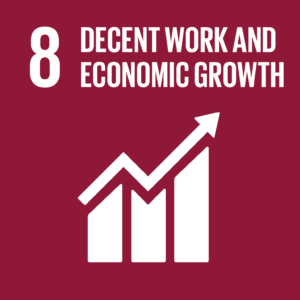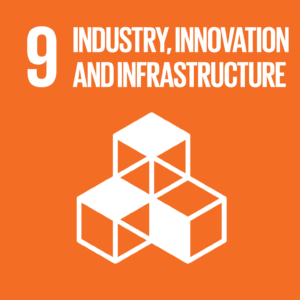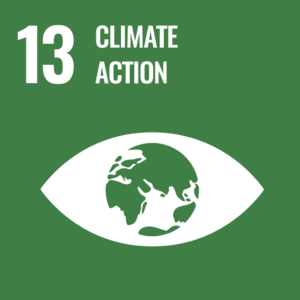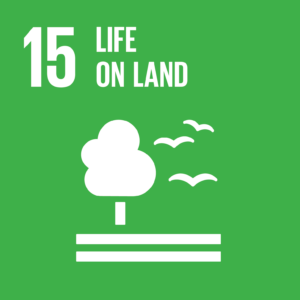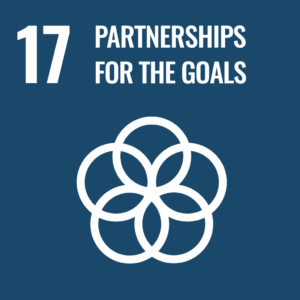Enhanced weathering research
Enhanced weathering research is crucial to be able to remove CO₂ on scale. Climate change is a pressing global issue that demands immediate action. Carbon Neutral Initiative recognizes that this is the biggest challenge of our generation and that it must be addressed with urgency. To meet the Paris Agreement goal of limiting the increase in global average temperature to 1.5°C, deep decarbonisation of the global economy alongside large scale carbon dioxide (CO₂) removal from the atmosphere are required. It is suggested that gigatonne-scale of CDR per year will be required throughout thew rest of the century. Such a scale of operation requires a global effort.
To that end, our vision is to make a meaningful impact in addressing this challenge by making significant contributions towards 1 gigaton of CO₂ removal per year.
Carbon dioxide removal via enhanced weathering is a process which aims to remove CO₂ from the atmosphere and store it safely and permanently,. Enhanced weathering utilizes alkaline materials (rocks, minerals and solid industrial wastes that are rich in calcium, magnesium and other alkali metals) for conversion of CO₂ to bicarbonate ions (also known as alkalinity, in solution-form) and solid carbonate minerals. Our approach accelerates the natural weathering processes of minerals by using finely ground feedstocks and spreading them over large areas. This increases the surface area available for CO₂ to react with the minerals, with reactions further sped up by microbial and soil processes, areas that we are actively researching and developing.
The principle aim of CO2 removal via enhanced weathering is to speed up the natural weathering reaction to remove CO2 on human-relevant timescales and meet global climate goals.
Enhanced weathering research on our pilot sites
We have established pilot locations in South America and in the Netherlands. The goal of these pilot locations is to gather relevant field data, for instance about the weathering rate, to accurately measure CO2 removal. As part of our commitment to our enhanced weathering research, we were awarded the first prize to test sustainable solutions on the Experiment Roof of the Municipality of Rotterdam, and have launched one of our trial plots on a rooftop in Rotterdam as of April 2024, which we will continue to monitor and measure. We are also in the process of launching a new enhanced weathering project in northwest Spain.
By starting small and learning from the data, we can improve our monitoring, reporting and verification (MRV) methods and strategies to make the biggest impact possible. We will also make sure to involve the local communities and make sure that they benefit from our projects, so that they can also be part of the solution. TNO, the Dutch National Institute of Applied Sciences, advises us in MRV approaches and the weathering process, as well as academic partners at the Universities of Utrecht and Alicante, and the Spanish Scientific Research Council (CSIC).
A robust MRV
A principle aim of Carbon Neutral Initiative is to develop and employ a robust, appropriate, responsible and transparent approach to MRV protocols for demonstration and quantification of CDR in our field deployments. This is to provide the most precise and accurate results as possible, whilst delivering a high level of confidence and understanding to buyers, markets and parties of interest within the CDR community as a whole. As part of our commitment to CDR MRV, we aim to apply the most suitable techniques as currently defined by both the operational and scientific communities. This means keeping up to date with new publications, white papers, conferences and media releases to ensure a thorough state-of-the-art MRV approach.
Our MRV procedure incorporates baseline measurements of project and site-specific feedstock, soil and pore water, using specific parameters for simulation and life cycle analysis purposes, CO2 removal determination and environmental considerations. While the outlined criteria can be considered essential, there is allowance for justified changes or additions to the MRV or sampling strategy, should project or site-specific factors play a role in decisions, or based on our ongoing research lines. MRV and sampling strategies may also change with new developments across the enhanced weathering field.
Our team includes world-leading CO2 removal experts, with knowledge in project compliance with appropriate enhanced weathering methodologies, project implementation, scientific and sustainability expertise. The scientific team has published several peer-reviewed scientific publications on CO2 removal, and was part of the “Measurements in Geochemical Carbon Dioxide Removal” first edition 2023 book. Beyond research and academic partners, we also work closely with some of Europe’s largest green rooftop growers and installers, and feedstock material suppliers.
Links to our enhanced weathering research
Links to some of the published research from members of the Carbon Neutral Initiative team:
- Measurements in Geochemical Carbon Dioxide Removal
- Geochemical carbon dioxide removal potential of Spain
- Global Carbon Dioxide Removal Potential of Waste Materials From Metal and Diamond Mining
- How the rock-inhabiting fungus K. petricola A95 enhances olivine dissolution through attachment
- Experimental investigation of multiple industrial wastes for carbon dioxide removal strategies
- Mechanisms of olivine dissolution by rock-inhabiting fungi explored using magnesium stable isotopes
- The potential and environmental implications of enhanced olivine weathering as negative CO2 emission technology in Europe
- Catalogue of South African mine tailings for geochemical carbon dioxide removal purposes
- Potential of enhanced weathering of calcite in packed bubble columns with seawater for carbon dioxide removal
- Kinetics-informed global assessment of mine tailings for CO2 removal
SDG
Our sustainable development goals
